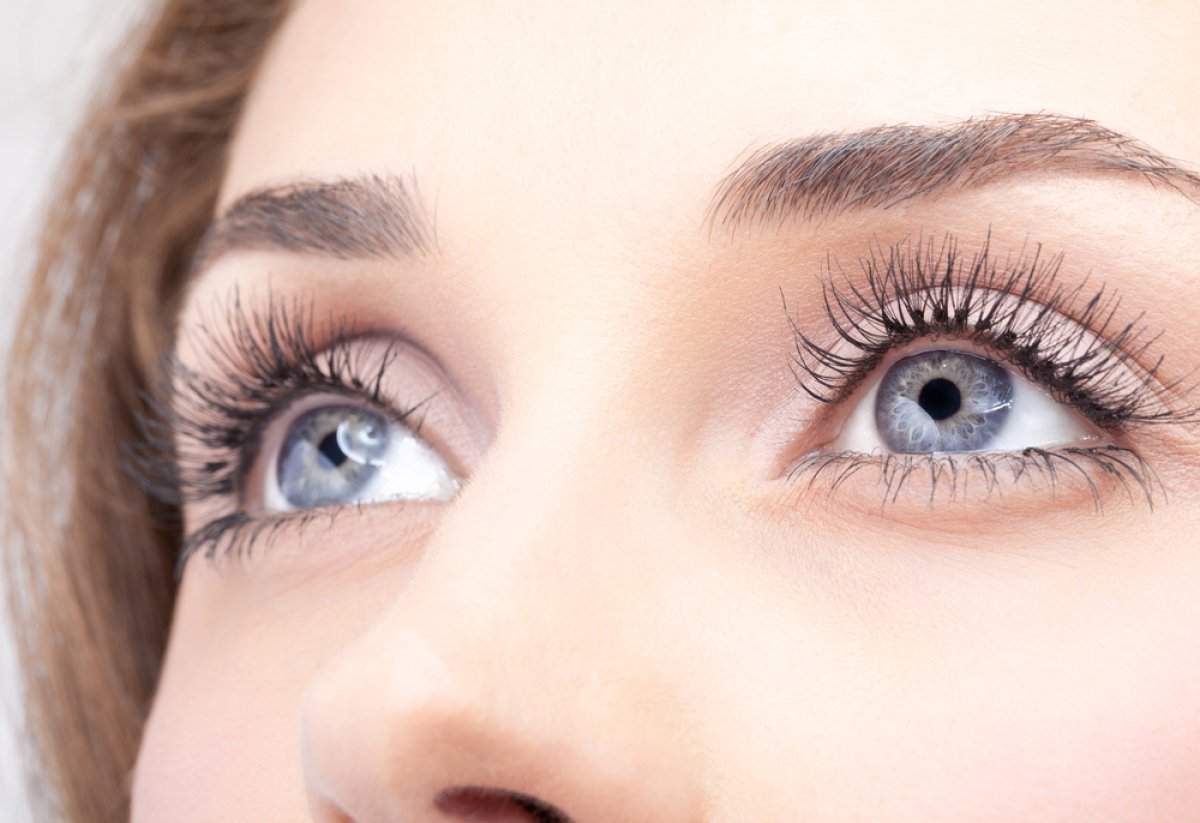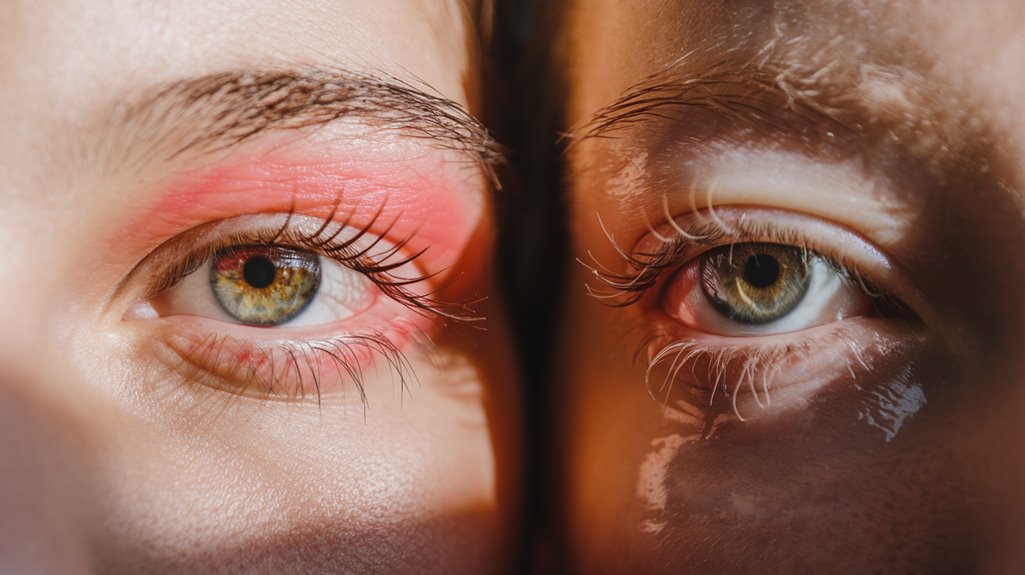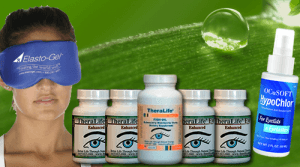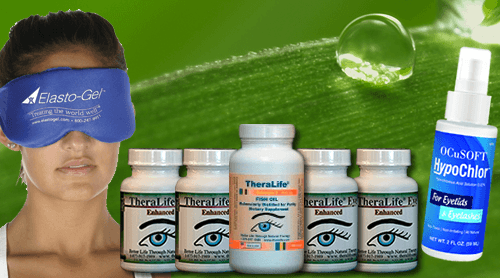To differentiate blepharitis from allergies, observe symptoms closely: blepharitis often involves crusty eyelashes and oily discharge along with eyelid redness, whereas allergies typically cause watery eyes and generalized itching. Proper diagnosis includes clinical evaluation, evaluating triggers like poor eyelid hygiene or environmental allergens.
TheraLife offers an array of products that benefit customers managing these conditions. For blepharitis, TheraLife provides solutions focused on promoting eyelid hygiene and reducing inflammation. Their comprehensive approach includes natural supplements that enhance tear production and support overall eye health, reducing reliance on artificial tears and medications. Customers also find relief from symptoms through recommended eyelid hygiene practices and warm compresses, which are part of TheraLife’s holistic care strategy.
For allergies, TheraLife emphasizes minimizing exposure to allergens and provides guidance on using antihistamines effectively. Their products are designed to enhance the body’s natural defenses, offering an integrated approach to symptom management. By understanding the unique needs of each condition, TheraLife helps customers achieve comfort and improve their quality of life through tailored treatments.
Best Blepharitis Treatment From TheraLife
Add To Cartrstanding and control of this persistent condition.
Key Takeaways
- Blepharitis is characterized by crusty eyelashes and oily eyelid discharge, whereas allergies often cause watery eyes and generalized ocular itching.
- Clinical evaluation, including patient history and slit-lamp examination, aids in distinguishing between blepharitis and allergies.
- Effective blepharitis treatment involves regular eyelid hygiene, warm compresses, and potential antibiotic prescriptions from an ophthalmologist.
- Allergy management includes identifying triggers, using antihistamines, and maintaining a clean environment to reduce exposure to allergens.
- Both conditions benefit from proper eyelid hygiene to prevent bacterial growth and alleviate symptoms.
Understanding the Symptoms of Blepharitis and Allergies
Blepharitis and allergies often present with overlapping symptoms that can complicate diagnosis and treatment. When comparing symptoms, both conditions may lead to redness, itching, and swelling of the eyelids.
However, a careful symptom comparison reveals subtle differences. Blepharitis mainly manifests with crusty eyelashes and flaking at the eyelid margins, while allergies are more likely to cause watery eyes and generalized ocular itching.
Visual indicators are essential in distinguishing between these conditions. Blepharitis often shows signs of eyelid margin inflammation and possible oily discharge, whereas allergies typically result in conjunctival redness and puffiness.
A significant aspect of blepharitis is its classification into anterior and posterior types, which affects oil-secreting glands and may lead to dry eyes due to gland dysfunction. Accurately identifying these visual indicators aids in proper diagnosis and management. Understanding these nuances will help you differentiate between blepharitis and allergies effectively.
Identifying the Causes and Triggers
While exploring the underlying causes and triggers of blepharitis and allergies, you’ll find that these conditions stem from different mechanisms.
Blepharitis often arises from bacterial colonization or dysfunctions in the meibomian glands, influenced by lifestyle factors like poor eyelid hygiene. Environmental factors, such as exposure to pollutants or irritants, can exacerbate these issues.
Conversely, allergies are typically immune responses to allergens like pollen, dust, or pet dander. Lifestyle influences, including stress or dietary choices, may also modulate immune sensitivity, potentially intensifying allergic reactions.
Understanding these distinct etiologies requires considering both environmental factors and lifestyle influences. Eyelid hygiene is crucial for managing blepharitis symptoms, supported by Mayo Clinic recommendations. This knowledge aids in differentiating between the two conditions and tailoring management strategies to mitigate symptoms effectively.
Diagnostic Approaches for Accurate Identification
Accurate diagnosis of blepharitis and allergies hinges on a structured approach that combines clinical evaluation and diagnostic testing. You’ll need to engage in a thorough clinical evaluation to differentiate between these two conditions. During this process, observe ocular symptoms like eyelid redness, swelling, and discharge to distinguish blepharitis from allergic reactions, which may present with itching and tearing. A differential diagnosis is essential, utilizing patient history and symptom evaluation. Diagnostic testing, such as slit-lamp examination, can further enhance accuracy by evaluating eyelid margins and tear film abnormalities. Additionally, consider allergy testing if allergic conjunctivitis is suspected. This evidence-based approach guarantees precise identification, enabling targeted management. Always collaborate with a healthcare professional for ideal diagnostic outcomes. It is crucial to address blocked meibomian glands in the diagnosis and treatment of blepharitis, as they contribute significantly to the condition’s symptoms.
Effective Treatment Options for Blepharitis
Managing blepharitis effectively requires a multifaceted treatment approach that addresses both symptoms and underlying causes. Prioritizing eyelid hygiene is essential. Regularly cleaning your eyelids can reduce inflammation and bacterial load. Incorporate gentle home remedies to complement medical treatments.
- Eyelid hygiene: Use a warm compress to loosen crusts and debris, followed by eyelid scrubs with diluted baby shampoo or commercial lid wipes.
- Home remedies: Consider omega-3 fatty acids supplements and tea tree oil to alleviate symptoms.
- Medical interventions: Consult an ophthalmologist for potential antibiotic or corticosteroid prescriptions if necessary.
For comprehensive management, Theralife products(Theralife products specifically target blepharitis) are recommended by healthcare professionals due to their ability to significantly improve symptoms and enhance meibomian gland function. These strategies are evidence-based and aim to improve your ocular health. Consistent application of these treatments can effectively manage blepharitis, reducing flare-ups and maintaining eye comfort.
Managing Allergies for Optimal Eye Health
Addressing blepharitis symptoms often leads to exploring the role of allergies in eye health. Allergies can exacerbate eye discomfort, so managing them is vital. You can begin by identifying environmental factors that trigger your symptoms, such as pollen or pet dander. Minimizing exposure to these allergens can greatly reduce irritation. Incorporating allergy medications, like antihistamines or mast cell stabilizers, can further alleviate symptoms. Always consult with a healthcare provider to determine the best pharmacological approach tailored to your needs. Additionally, maintaining a clean living environment by using air purifiers and regularly washing bedding can mitigate allergen exposure. It’s essential to maintain proper eyelid hygiene to prevent bacterial growth, which can worsen blepharitis symptoms.
Best Blepharitis Treatment From TheraLife
Add To Cartrstanding and control of this persistent condition.
Frequently Asked Questions
Can Lifestyle Changes Help Prevent Blepharitis and Allergies?
Absolutely, lifestyle changes can prevent both blepharitis and allergies.
Prioritize proper hygiene practices by regularly cleaning eyelids to remove debris and bacteria.
Focus on environmental factors by minimizing exposure to allergens, such as dust and pollen, through air purifiers or frequent cleaning.
Keep humidity levels ideal to reduce irritation.
These proactive measures, backed by clinical evidence, contribute considerably to managing symptoms and reducing recurrence, supporting overall ocular health.
Are There Any Home Remedies for Soothing Eye Discomfort?
Imagine stepping into a time machine and landing in a cozy apothecary.
For eye discomfort, you can use cold compresses to reduce inflammation and provide temporary relief. Brew some chamomile or green herbal teas, let them cool, and use them as gentle eye soothers.
These remedies are evidence-based and can help alleviate symptoms, but remember, they’re not substitutes for professional medical advice. Always consult your healthcare provider for personalized treatment.
How Do Diet and Nutrition Impact Eye Health in Blepharitis and Allergies?
Your diet and nutrition greatly impact eye health, particularly in cases of blepharitis and allergies.
Ensuring you’re not experiencing nutrient deficiencies, especially in omega-3 fatty acids and vitamins A, C, and E, is vital. These nutrients support ocular surface health and reduce inflammation.
Maintaining ideal hydration levels also prevents dry eye symptoms, enhancing tear production. An evidence-based approach shows that balanced nutrition deeply influences the management and mitigation of eye discomfort.
What Role Does Stress Play in Exacerbating Eye Conditions?
Stress can be a monstrous force, turning your eyes into battlegrounds of inflammation.
Anxiety effects aren’t just whispers; they release a cascade of cortisol, exacerbating ocular conditions. Mastering stress management is essential. Techniques like mindfulness can mitigate this relentless assault, stabilizing the body’s response.
Evidence shows that stress doesn’t merely nudge; it catapults immune systems into overdrive, intensifying symptoms. Prioritizing relaxation could be your shield against such ocular havoc.
Can Certain Medications Worsen Blepharitis or Allergy Symptoms?
When you’re managing blepharitis or allergy symptoms, be aware that certain medications can indeed worsen your condition.
Medications like antihistamines or diuretics might lead to dry eyes, exacerbating symptoms. NSAIDs, known for reducing inflammation, could sometimes irritate your eyes.
Always consult your healthcare provider about potential medication interactions. They’ll help you navigate symptom management effectively, ensuring your treatment plan is evidence-based and tailored to your specific needs, minimizing adverse effects.
Best Blepharitis Treatment From TheraLife
Add To Cartrstanding and control of this persistent condition.
Conclusion
To effectively distinguish between blepharitis and allergies, it’s essential to identify specific symptoms and triggers. TheraLife.com offers products that benefit customers by providing targeted solutions for these eye conditions. Through evidence-based treatments, TheraLife’s products emphasize maintaining lid hygiene and using their formulas to address the root causes of blepharitis. For allergies, they recommend using their natural supplements that support overall eye health and reduce allergic symptoms. TheraLife’s comprehensive approach includes advice on lifestyle changes and dietary modifications that enhance the effectiveness of their products.
TheraLife’s solutions are designed to relieve symptoms such as dry, itchy, and crusty eyes, commonly associated with both blepharitis and allergies. Their products are developed to provide relief and long-term management without the side effects often associated with conventional treatments. By staying informed and adapting to the latest medical insights, TheraLife ensures that customers receive the best possible care for their eyes.
With TheraLife’s dedication to eye health, customers can confidently address blepharitis and allergies, ensuring their eyes receive the care they deserve, much like a Victorian detective solving a mystery with precision and expertise.





